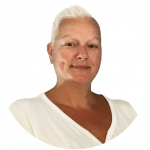Cerebral Palsy Life Expectancy
Home > What Is Cerebral Palsy? > Cerebral Palsy Life Expectancy
- Last Updated Date: March 14, 2024
On average, most children with cerebral palsy will live between 30 and 70 years. Their life expectancy often depends on many factors. Those with more mobility and better access to certain medications and treatments typically have the longest life expectancies. Some children may require surgeries and assistive devices to manage their condition and improve their life expectancy.
At the Birth Injury Center, we understand the severe impact a cerebral palsy diagnosis can have on your family. While there is no cure for cerebral palsy, the right treatments and medical interventions can help greatly. In addition, you should not be on the hook for the costs of your child’s condition if medical negligence is the cause. Our highly experienced team can help you seek the financial compensation you and your child deserve.
Life Expectancy for Mild Cerebral Palsy
Children with mild cerebral palsy will likely live longer than those with more severe conditions. A child with mild cerebral palsy is likely to live a full life span, similar to the general population. As the symptoms of the disease are less severe, the impact on the child’s life is also less.
Life Expectancy for Severe Cerebral Palsy
Severe cerebral palsy will likely result in a shorter lifespan than those without the condition or those with a mild version of the condition. A 2006 study found that children diagnosed with severe cerebral palsy at age 2 have a 40 percent chance of living to 20. Symptoms of a severe form of the disease often contribute to this shorter lifespan. These include:
- Feeding problems
- Seizures
- Cognitive issues
- Lack of independence or ability to care for self
- Limited mobility
- Other health complications caused by cerebral palsy
What Is the Most Common Cause of Death in Cerebral Palsy Patients?
Cerebral palsy affects each child differently, and its symptoms can vary remarkably. A 2019 Australian study found that early death was highest among children in the first five years of life, especially if they had a more severe case of cerebral palsy. This was most often true when the child had profound intellectual disabilities associated with their condition. Severe motor impairment also contributes to early death in those with cerebral palsy.
Those living with cerebral palsy may die early because of other conditions, such as the following:
- Epilepsy
- Congenital malformation
- Respiratory diseases such as pneumonia
- Aspiration and choking
What Is the Longest Someone Has Lived With Cerebral Palsy?
Many people with cerebral palsy live a long and full life. While we have no official record of who may be the oldest person to live with the condition, many have lived into their 80s and beyond. This includes Bernadette Rivard, who lived to 83. Bernadette could barely speak and was dependent on the care of others, but she lived a long life.
Does Cerebral Palsy Worsen With Age?
Cerebral palsy does not get worse with age. While it is a permanent and incurable condition, it will not progress. Symptoms can change over time, and this may seem like progression or regression to some. However, this does not mean your child’s cerebral palsy is getting worse. It’s a natural course the disease often takes.
Post-impairment syndrome may also trick you into thinking the condition is getting worse. However, this common condition occurs when someone repeatedly drains their reserved energy stores. It can happen after simple tasks like climbing stairs, sweeping, or other household chores. Continued post-impairment syndrome, when left untreated, can lead to significant complications.
Common Factors That Affect the Life Expectancy of a Child With Cerebral Palsy
Cognitive, visual, and motor issues can affect the life expectancy of a child with cerebral palsy.
Cognitive Issues
Cognitive ability is an important factor in determining a child’s life expectancy. Children with cognitive impairments may struggle to understand speech or speak themselves. They are often unable to communicate effectively or learn in school. They may also suffer from depression, seizures, and other mental health issues. These children typically rely on others for primary care.
Approximately 30 to 50 percent of individuals with cerebral palsy also have an intellectual disability. This can add to their challenges and increase the likelihood of earlier death.
Visual Disabilities
According to one study, roughly 66 percent of children with cerebral palsy have some degree of visual impairment. Approximately 1 in 10 children with cerebral palsy are blind, and an even higher number have significant vision issues. Visual disabilities reduce a child’s ability to care for themselves and can contribute to earlier death.
Motor Issues
According to the Centers for Disease Control and Prevention, about 58.9 percent of children with cerebral palsy can walk independently, 7.8 percent use a mobility assistance device, and 33.3 percent have minimal or no walking ability. Motor issues often significantly affect a child’s life expectancy. Those with motor ability issues may also struggle with manual tasks such as eating or breathing without assistance.
Children who can move on their own can also care for themselves, get exercise, and live a healthier life. This is a significant contributing factor to a child’s life expectancy.
Long-Term Care for Cerebral Palsy
Long-term care for your child or adult dependent with cerebral palsy can help them live a longer, more fulfilling life. You can work with health care professionals to improve your child’s health outlook through physical therapy, speech therapy, and many other treatment options.
Cerebral palsy treatment is often expensive and can create financial hardship for you and your family. A cerebral palsy birth injury lawsuit may help you win compensation from the party responsible for your child’s injuries.
Lifetime Cost of Caring for a Child With Cerebral Palsy
The lifetime cost of caring for a child with cerebral palsy is approximately $1 million. This number is likely to climb as health care costs increase. Those with cerebral palsy face medical costs 10 times higher than those without intellectual disabilities or cerebral palsy. For children with both intellectual disabilities and cerebral palsy, medical expenses can be 26 times greater than those without either condition.
How To Improve Quality of Life for Children With Cerebral Palsy
You can take several steps to help improve your child’s quality of life. These include treatment options such as the following:
Physical, speech, occupational, and recreational therapies
- Medical care and surgery
- Assistive medical devices such as wheelchairs, scooters, and walkers
- Pain medication
- Epilepsy or seizure medication
- Mental health support such as music therapy or a support animal
- Technology assistance such as special computers or communication technology
Resources for Those Living With Cerebral Palsy
Many resources are available for those with cerebral palsy or caring for someone with the condition. A few we recommend include:
- KidsHealth helps explain cerebral palsy to parents and children.
- United Cerebral Palsy advocates for and educates those with cerebral palsy and the general public.
- CDC Cerebral Palsy Research continues to research this condition to find ways to improve the quality of life for those living with it.
We at the Birth Injury Center are here to help as well. We can assist you in seeking the compensation you deserve in a birth injury lawsuit. We work with parents whose child was injured during birth to collect significant monetary damages from the responsible party. Contact the Birth Injury Center team today to speak with us about your case.
Written by:
Birth Injury Center Team
The Birth Injury Center aims to create informational web content and guides to help women and their families seeking support and guidance for birth injuries caused by medical negligence. All of the content published across The Birth Injury Center website has been thoroughly investigated and approved by medical expert Natalie Speer, RNC-OB, Attorney Ryan Mahoney, and Attorney Rick Meadows.


